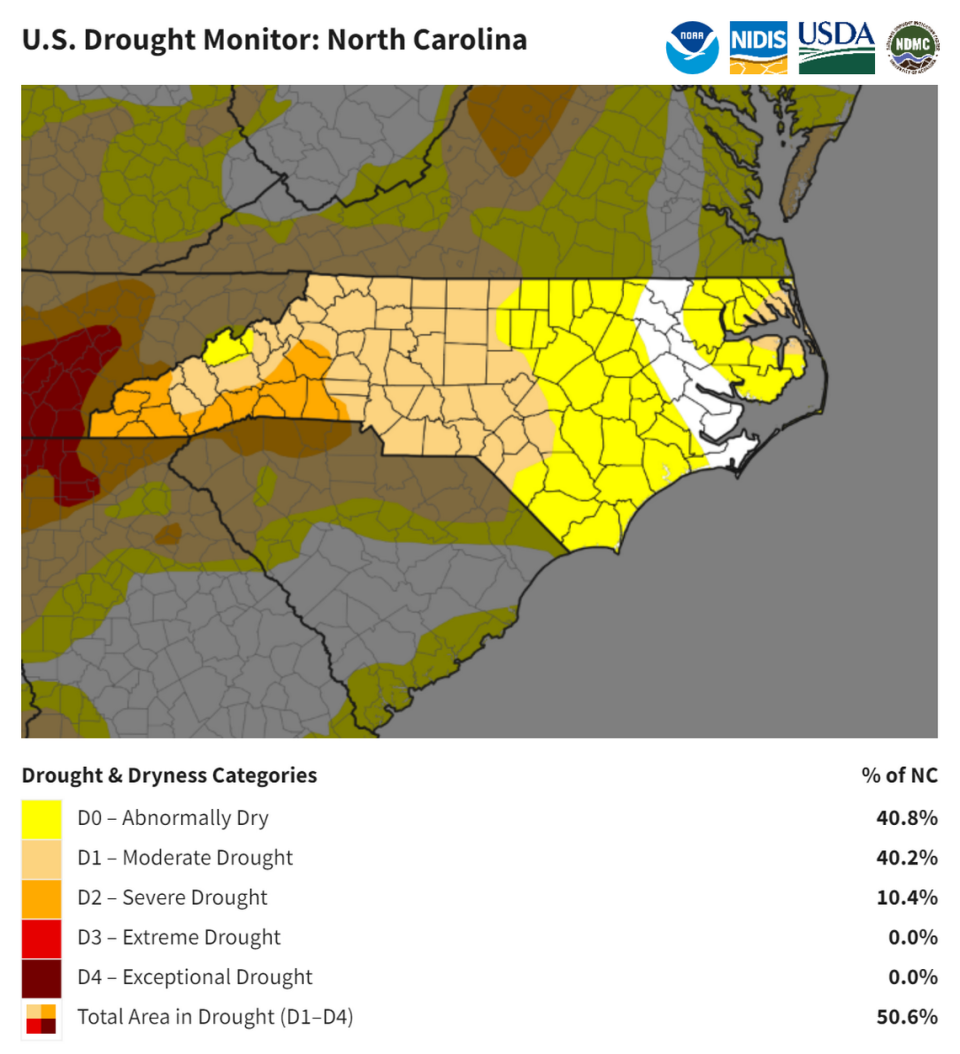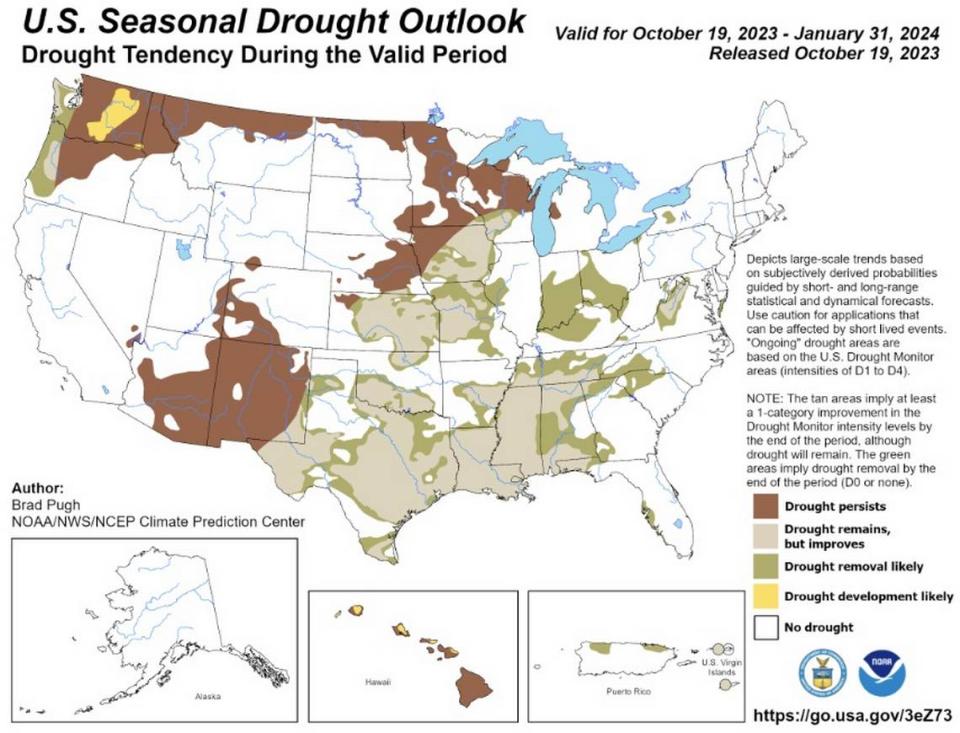This map shows half of NC is in drought. What it means and when rain might come
Half of North Carolina is in moderate to severe drought and most of the rest of the state, including the Triangle, is abnormally dry for this point in the year.
Below-normal rainfall amounts over the past 30 to 60 days already are evident in lower lake levels and reduced stream flows in areas of the state. Plants are showing stress and firefighters are having a more difficult time extinguishing wildfires.
Here’s what you need to know.
Is North Carolina in a drought?
The U.S. Drought Monitor, a project of the University of Nebraska-Lincoln with the U.S. Department of Agriculture and the National Oceanic and Atmospheric Administration, shows that nearly 90 percent of North Carolina had received below-normal rainfall through the end of October. According to the map, which shows data valid as of Oct. 31:
▪ All or parts of 17 of our 100 counties, all of them in the far western part of the state, are in severe drought.
▪ All or parts of more than 50 N.C. counties are in moderate drought.
▪ All or parts of more than 50 N.C. counties are abnormally dry.
▪ Parts or all of only about a dozen counties have had normal rainfall amounts this year.

How serious is the drought?
Drought.gov, the National Integrated Drought Information System, reminds us that, “Drought is a normal climate pattern that has occurred in varying degrees of length, severity, and size throughout history.”
▪ So far, no counties have been designated drought disasters under USDA parameters, which would make farmers eligible for emergency loans and other assistance. But drought.gov says the period from January to September of this year has been North Carolina’s 56th-driest since record-keeping began in 1895.
▪ September was the 52nd-driest on record, the state says.
▪ 5.6 million people in North Carolina are living in areas experiencing drought. Though some parts of the state have had above-average rainfall, often due to the passage of tropical storms, many are several inches below normal, the USDA reports. Frisco, on the Outer Banks, has had more than 10 inches above its normal amount of rainfall for the year while Southern Pines, in the Sandhills 70 miles southeast of Raleigh, has had nearly 11 inches fewer than normal.
What problems could drought cause?
Depending on the severity of the drought, effects can include:
▪ Dry lawns and stressed crops such as winter wheat and Christmas trees
▪ Reduced stream flows and shrunken drinking-water reservoirs, possibly resulting in voluntary or mandatory water conservation measures. As of Wednesday, Jordan Lake was 3.73 feet below full pool, leaving a wide shoreline visible to fishermen and anyone looking out their car windows as they cross the reservoir on U.S. 64 and other routes. Falls Lake was 3.32 feet below full pool on Wednesday.
▪ Stresses to wildlife
▪ Reductions in the generation of hydroelectric power
▪ Outdoor burning bans
▪ Difficulty extinguishing or reducing the spread of wildfires

When does the forecast call for rain?
Forecasters say an El Niño that developed in June and is expected to continue to be strong through spring 2024 could result in a winter that’s colder and stormier than normal in North Carolina and across the South.
The National Weather Service says that long-term forecasts indicate drought conditions in much of the South will continue through the winter, through coastal states including North Carolina could see some improvement by the end of January.
Meteorologists say forecasts for this winter are uncertain because while the El Niño is expected to have a strong effect on the weather in our region, the North Atlantic Oscillation and other competing factors also are in play.

